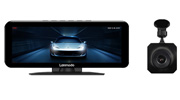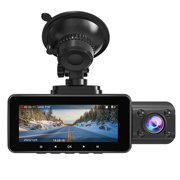Let's press the fast-forward button of our lives and try to imagine a future that is more progressive and improved. It is no doubt that the future holds a huge number of evolutions for us. From the smartphones that we hold today, to the vehicles that we will drive in the future, all will be developed with the sole purpose of providing safety and convenience.
Even today, the automobile industry is providing us with vehicles that are far more advance than the basic initial design. The vehicles that we drive today are smarter and equipped with every bit of the latest technology. The BMW 5 Series, Audi A4, Honda Odyssey, Mercedes-Benz S-class, Ford Mustang and Tesla Model S are launching cars that take the driving experience to a whole new level.
Contemplating the present situation of technological evolution in cars if we imagine the future of the automotive industry, then an image of a high-tech car designed to run faster with room for every new technic comes across our mind. The future cars will hold these-

SELF DRIVING CARS
The idea of the self-driving car is a revolutionary one. Self-driving or autonomous cars operate with the help of sensors, radars, LIDAR, a complex algorithm and machine learning systems to make driving more smooth and safe. The self-driving car will have certain privileges on our future driving:
- The autonomous electric cars will reduce CO2 emission by 80% worldwide.
- The ride-sharing system will allow the vehicle to serve multiple people within a short period of time.
- There will be no need for parking spaces.
- There will be less traffic on the roads.
- These cars will drastically change the infrastructure of a country.
- They will eliminate the need for a human driver thus, making driving much safer.
ENERGY STORING BODY PANELS
Electric and hybrid cars are already talk of the town! Toyota is experimenting with solar body panels to design vehicles running on solar energy. Automakers now want to impress the world by developing cars having energy storing body panels. The idea is that the body of the car will work as a battery removing the traditional and heavy batteries of today. The nano energy particles are incorporated with a particular type of resin to create the thin, strong carbon fibre panel of the car. The cars with energy-storing body panels will be lightweight and much faster. The panels will obtain energy in 2 ways:
- When the brakes are applied.
- By plugging it into the electricity grid.

ACTIVE-SAFETY SYSTEM
The automobile industry thrives to build cars by focusing on the active safety system and has introduced the advance driver assistance system (ADAS). These systems operate to enhance car driving safety. Along with active safety systems, automakers are trying to improve the passive safety systems as well. Mercedes is experimenting to design active safety airbags that deploy from underneath the car as soon as the sensors detect any sign of a collision. The friction coating of the bag will help to reduce the impact of the accident.
V2V COMMUNICATIONS
Vehicle-to-vehicle (V2V) communication enables the cars on the roads to exchange data and warnings while travelling on the road. The exchange includes speed, travel direction, location, braking and loss of stability. This technology uses dedicated short-range communication (DSRC). The vehicles are capable of broadcasting or receiving data within a range of 300m and operate at a frequency of 5.9GHz. The V2V system will be able to gather information on the road situation from 5-10 hops ahead creating a 360° awareness for other drivers on the road. First-hand knowledge about the road condition will help the driver to stay alert and change his course of action to avoid fatal accidents.
NIGHT VISION CAPABILITIES
Driving becomes risky during the dark night. Due to insufficient light, the human peripheral vision declines due to which detecting pedestrians, animals and other obstacles at night become pretty difficult. Well, to cope with the invisibility issue top car manufacturers including as Audio A6, BMW, Cadillac, Mercedes Benz S-Class, Rolls-Royce Wraith have introduced in-built Night Vision System (NVS) within the vehicles. Presently, these inbuilt NVS are able to display a black and white image of the objects on the road using the thermal imaging technique but in the future, the cars will be using strong graphene chips. These chips will work through sensors and will reduce the cost and size of thermal imaging.




